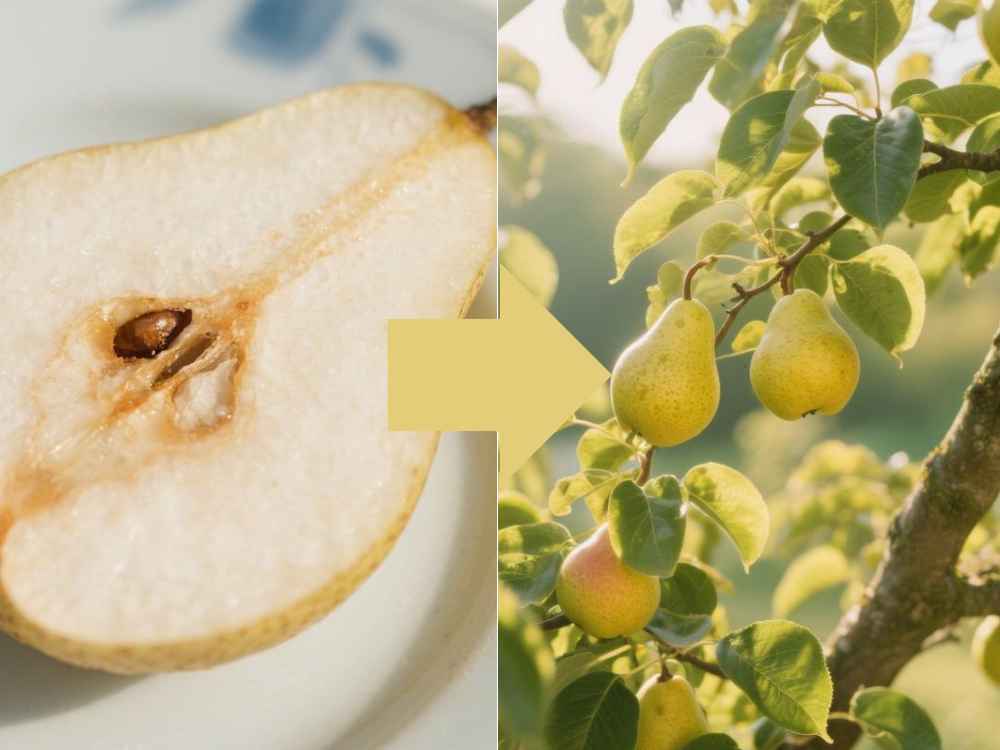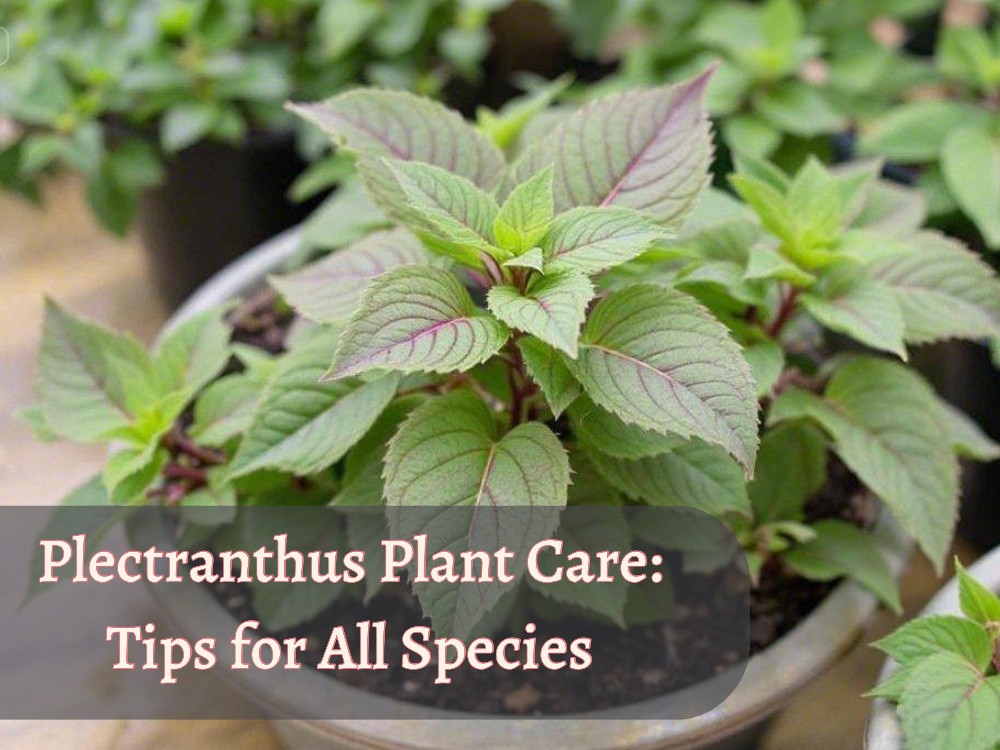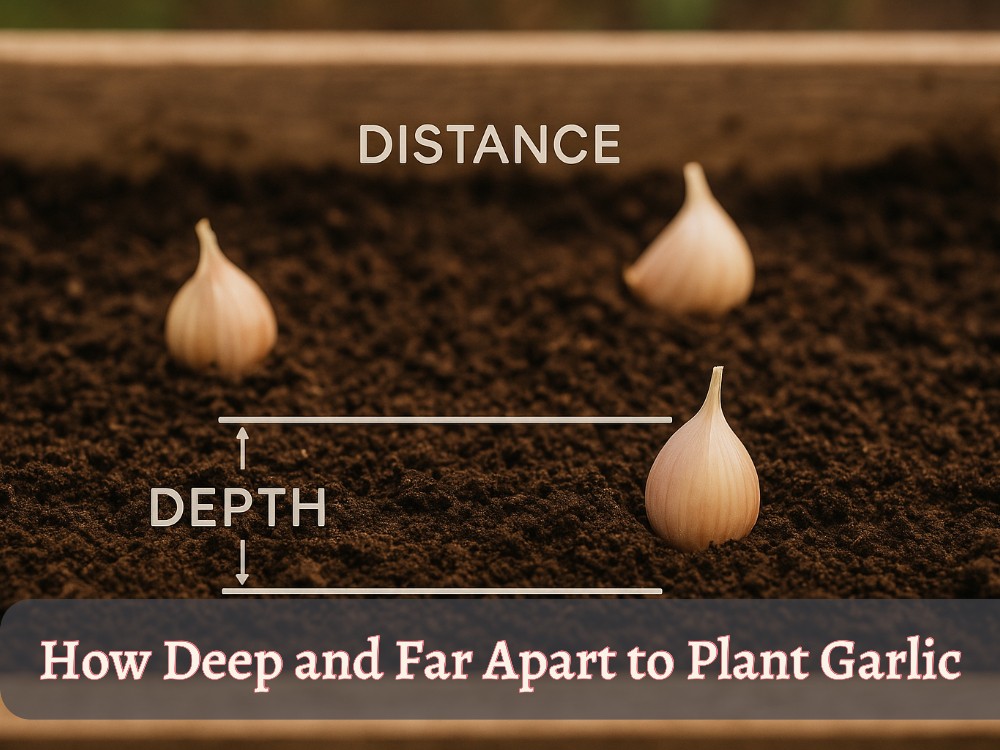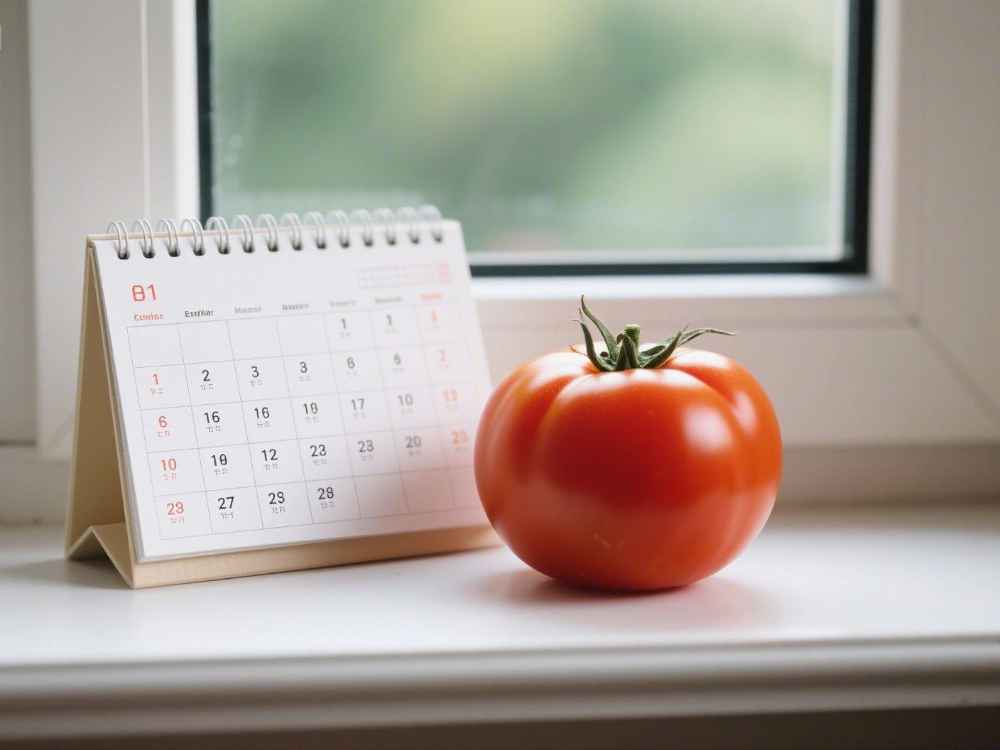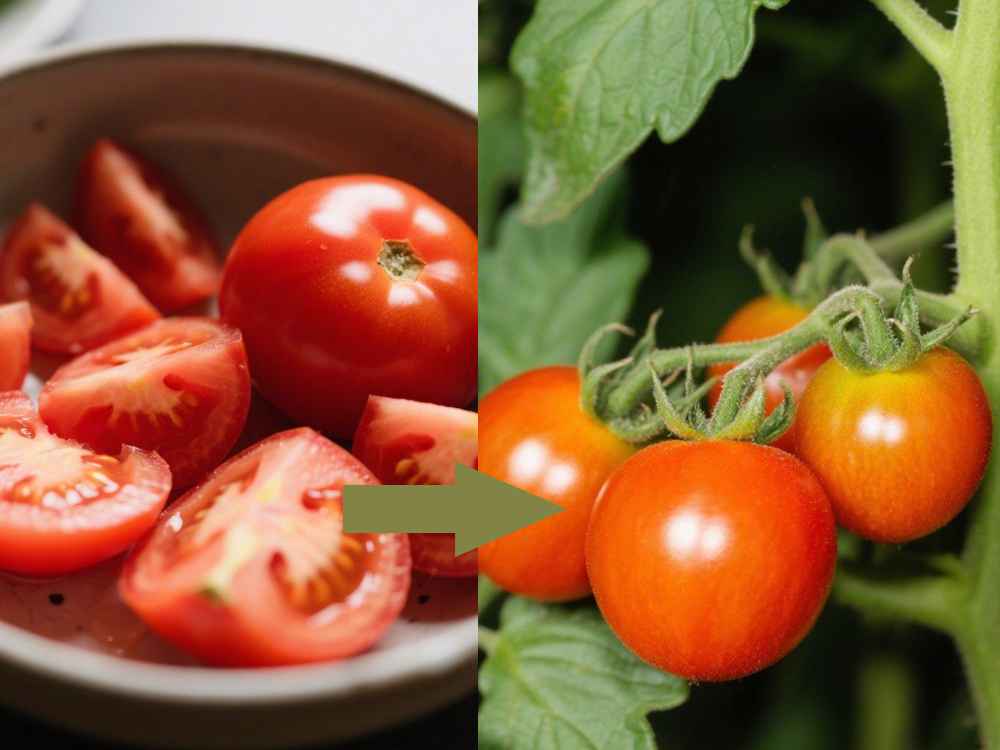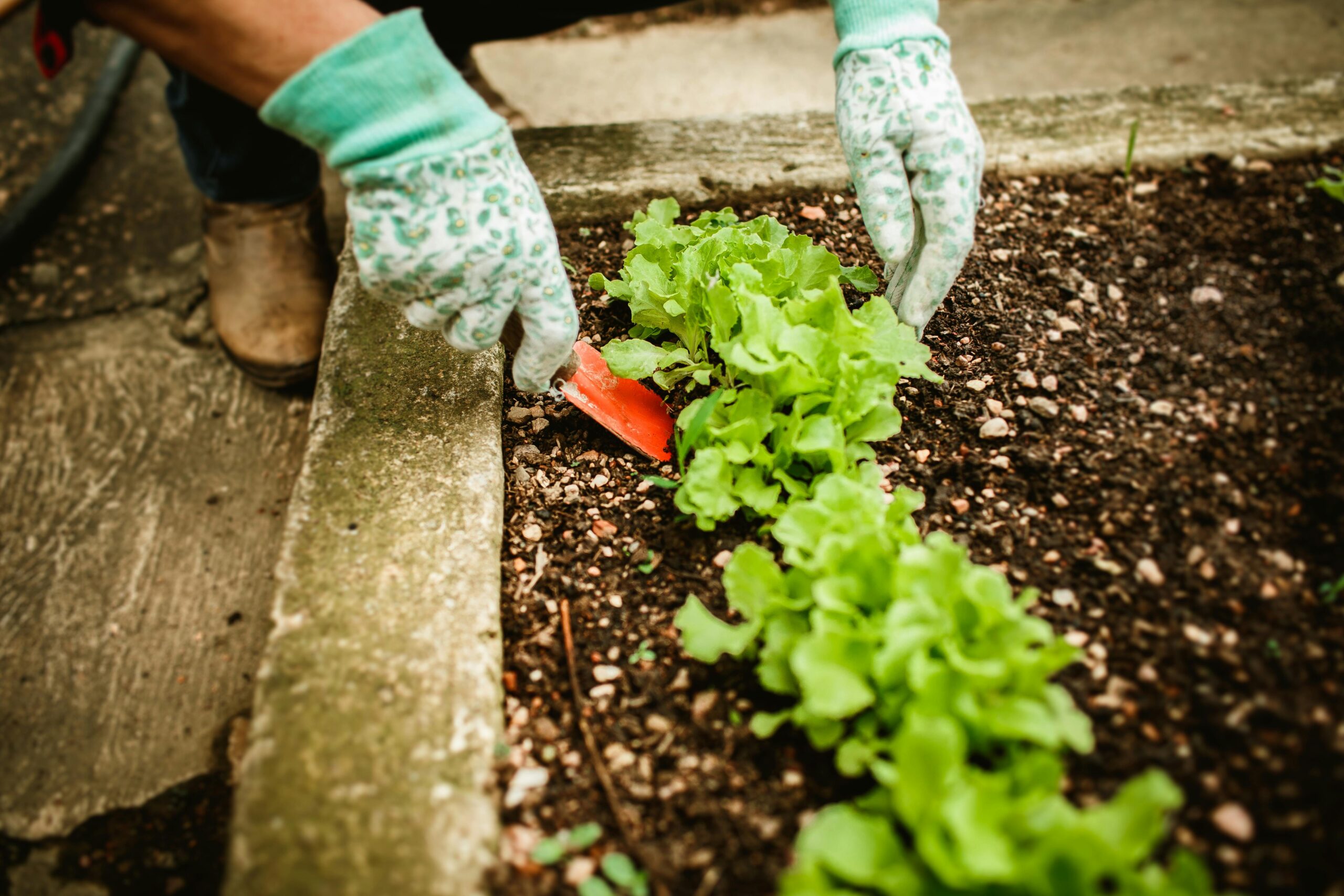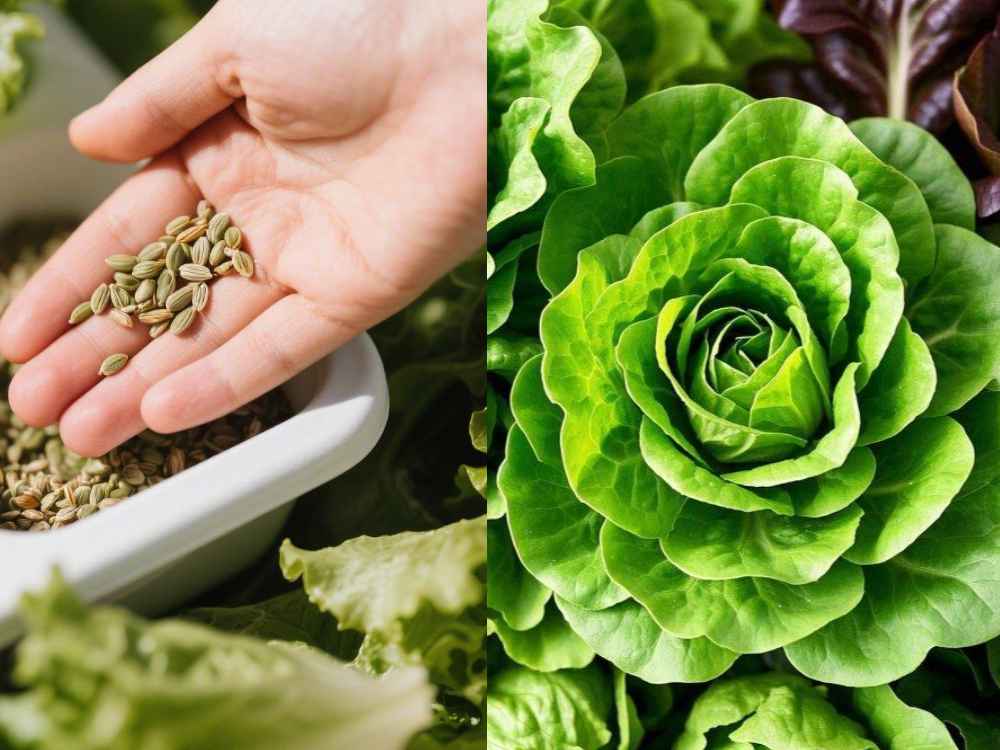Whenever I eat a pear and come across its little seed, I can’t help but pause for a second. It looks so small, so ordinary, yet the thought that this tiny thing could one day become a full-grown tree fascinates me every time.
That’s what keeps pulling me toward growing pear trees from seed. There’s something magical and personal about it. And that’s what started my journey: How do you actually grow a pear tree from seed?
Now, I know what many people say:
“Seed-grown trees take time to fruit.”
“They’re unreliable,” or
“They won’t grow true to the original variety.”
And honestly? It’s true! Seed-grown trees do take time. But because pears require cross-pollination, each seed begins its own unique story.
Is Growing Pear Trees from Seed Worth It?
On Permies.com, an experienced gardener, Steve Thorn, shared something that instantly clicked with me.
He pointed out that many modern pear varieties just aren’t adapted to every local climate, especially when it comes to common issues like fire blight, which can wipe out an entire tree.
And that made me think:
What if growing a pear tree from seed could actually be a smarter, more resilient way to garden, especially for my unique climate?
Another gardener in the same discussion, May Lotito, shared that she had both seed-grown and grafted pear trees.
Surprisingly, her seed-grown trees didn’t fall behind at all.
They grew just as well and even started developing fruit buds within a few years.
Her experience showed that it’s not just about how a tree is planted; it’s about how well it’s cared for, whether it suits the local climate, and how naturally vigorous the variety turns out to be.
So yeah, growing a pear tree from seed might take a bit of patience. But it also gives you the chance to develop something truly local, resilient, and maybe even one-of-a-kind.
When and where should I plant My Pear Seeds?
Pear seeds need cold weather before they can begin to grow (a process known as cold stratification)
According to Gardening Know How, it’s best to keep pear seeds in the fridge for about 4 months, ideally starting between January and February, to help them break dormancy.
Some other trusted sources, like MasterClass | Home & Garden, suggest that even 3 months of chilling can be enough in many climates.
Once the cold period is over, the seeds should be planted indoors, not outside. Use pots or containers in a warm, protected space.
Best Timing to Plant Pear Seeds
Just start keeping pear seeds in the fridge 3 to 4 months before the last frost date. (Here’s when to plant pear seeds in your area)
By May or early June, the seedlings are usually strong enough to be transplanted outdoors, just as the risk of frost has passed.
Remember, the exact timing for sowing pear seeds may slightly vary, depending on the location and pear variety. (Here’s how)
You know what, if you want to buy a pear tree from a nursery to transplant into your home garden, then the fall season is a good time, discover when to transplant trees. Also, explore more helpful guides about this topic.
Can you plant trees in the fall? What’s the possibilities?
Can you plant a pear tree in the fall
Materials List to Plant Pear Seeds
| Material | Purpose |
|---|---|
| Pear seeds | The starting point for your tree |
| Pots or containers | Safe space to plant seeds |
| Potting soil with peat moss | Light soil that helps roots grow well |
| Spray bottle | To gently moisten the soil |
| Refrigerator | Gives seeds a chill period if needed |
How to Plant Pear Seeds With Just 5 Simple Steps?
Before moving to the steps, you might think choosing the right pear variety really matters. And it does, but not in the way you’d expect.
When you grow a pear tree from seed, you’re not copying the parent. Each seed is unique, thanks to cross-pollination.
So instead of aiming for the perfect variety, try to plant two pear trees with a 7-meter distance between them. And for better pollination, also make sure both pear seeds are from different varieties.
Let’s see how to plant pear seeds in the best way!
Step 1: Prepare The Pear Seeds (Cold Stratification)

Like other fruit trees, pear seeds also require cold stratification to germinate and grow into a full tree. It is the first and must-do step in planting pear seeds.
Can it be possible to stratify pear seeds outdoors?
Unlike tougher seeds, pear seeds are sensitive and can easily rot or be carried away by insects or ants if planted directly outdoors.
That’s why many experts recommend stratifying pear seeds indoors in the fridge at 4 °C. So, be ready to start sowing pear seeds from January to February (3 to 4 months before the last frost date).
How to Stratify Pear Seeds?
Start by soaking your pear seeds in lukewarm water for 24 hours. This helps soften their thin outer layer, getting them ready for chilling.
After soaking, you can choose one of two indoor methods:
- Peat Moss Method (great for larger batches): Mix your pear seeds with slightly damp peat moss, then place the mix inside a zip-lock bag or container. Please keep it in your fridge at around 4°C (39°F).
- Paper Towel Method (better for fewer pear seeds): Wrap your soaked pear seeds in a moist paper towel, seal them in a plastic bag, and place them in the fridge.
I found on Home&Garden that Amy Enfield suggests keeping just 4 to 5 seeds in one bag.
During the next 8 to 12 weeks, keep an eye on your pear seeds once a week. If the peat moss or paper towel dries out, mist it lightly.
If mold shows up and no sprouts appear yet, you can rinse and re-wrap.
But if your pear seeds have already started sprouting, do not soak or disturb them again; just move on to the next step when ready.
Step 2: Prepare the Soil in Pots or Containers

Once your pear seeds are done chilling in the fridge, usually by mid or late April, it’s time to get the soil ready and bring those seeds out.
Choosing the right sowing material
Now, you do not need a big garden space to start. In fact, most gardeners suggest using pots or containers for pear seed sowing because they give you more control.
Spring weather can change quickly, so with containers, you can easily move your little pear plants indoors or outdoors if needed.
You have two easy options:
- Use small pots or cups for each pear seed. These are simple and good if you’re starting indoors.
- Or use a medium container right away. This allows you to manage pear seedlings in unpredictable weather conditions.
Soil Type
As for the soil, don’t use anything too heavy. Pear seeds grow best in light, soft soil. A mix of peat moss and a little perlite works well for a pear plant.
For overall tree growth in a container, try to keep the soil pH range from 6.0 to 7.0. This soil type usually feels rumbly and smells earthy, which is considered best for a pear tree.
Good Location for Pots
If you want to keep the pot outside during the day, make sure the weather is calm, no frost, and no strong wind. If it gets chilly at night, just bring your pear pot back indoors.
Step 3: Sow Pear Seeds and Spray Water

Make holes simply with fingers or a pencil/stick and start sowing pear seeds. If there is a container, keep a distance of 2 to 3 inches between each pear seed.
Before sowing pear seeds, water the soil lightly to moisten it, but not to the point of being soggy.
- For planting pear seeds, Gardening Know How recommends planting one seed per pot.
- But if you’re using a larger container, make sure to leave some room between each one, ideally from 3 to 4 inches.
Sowing Depth
When it comes to depth, sources do vary a bit. Gardening Know How suggests planting your pear seeds about 1 inch deep, which works great in most conditions.
On the other hand, Scott Miracle (via Home and Garden) recommends going a little deeper, around 2 to 3 inches.
If your soil is extra loose or you’re in a warmer zone, the deeper depth might help with stability and moisture.
After sowing pear seeds, if the soil feels dry, lightly spray water, and keep the seedlings in indirect sunlight with a temperature of 18 to 24 Centigrade.
Step 4: Choose a Good Location and Decide on the Distance

Once your pear seedling shows about 3 to 4 true leaves and the danger of frost has passed, usually by May or early June, depending on where you live, it’s time to transplant it into its permanent home.
But before you move it outdoors, it’s important to pick the right spot and plan the spacing carefully.
Right Spot for Transplanting Pear Seedlings
Start by choosing a place that gets full sun, at least 6 to 8 hours of sunlight daily. The soil should drain well; pear trees don’t like standing water.
Also, aim for a location with good air circulation but not one that is too exposed to harsh winds.
Keep the right Distance between two pear trees.
Now, here is something crucial: most pear trees are not self-pollinating. This means you will need at least two pear trees for proper pollination and fruit production.
But they can’t be planted too close together either. Bees and wind need space to move pollen from one tree to another.
According to WikiHow and Home & Gardens, it’s best to keep 25 feet (around 7.6 meters) of space between two standard pear trees.
This gives each tree room to grow, spread its roots, and get enough sunlight and airflow.
If you’re working with dwarf pear varieties, the spacing can be a bit closer, around 12 to 15 feet, but for regular trees, stick to the 25-foot rule.
Step 5: Transplant Pear Seedlings Outdoors

Once your pear seedlings have reached about 12 inches (31 cm) in height and the danger of frost has passed, you can transplant them outdoors.
This usually happens around May or June, depending on your local climate.
When to Transplant Pear Seedlings?
According to Gardening Know How, pear seeds usually germinate within 3 months, and once the seedling reaches about 12 inches (31 cm) in height, it’s a good sign that it’s ready to move outdoors.
But don’t forget to check your local weather; the outdoor temperature should be mild, and frost should be completely gone.
Different Methods for Pots and Containers
If you started your seeds in small cups or tiny pots, you will need to transplant them into the ground or a larger container once they grow bigger.
However, if you have already used a large container that is deep and wide enough, you may not need to transplant again; you can let the tree keep growing right there.
Just make sure the container is big enough (18 to 24 inches) to support a mature pear tree based on the variety you are growing.
Before transplanting your pear seedlings, let them spend a few days outside to get used to the sun and air; that is called hardening off.
Conclusion: How Long Does a Pear Tree Take?
Growing a pear tree from seed is a slow but rewarding journey. While your pear seeds may sprout in about 3 months, the full-grown tree can take anywhere from 5 to 10 years (sometimes more!) to bear fruit, depending on the variety, care, and climate.
That’s patience in action! And here’s something interesting: pear trees can also grow from cuttings, but that method is a bit trickier and often less reliable compared to grafting or planting seeds.
Still, growing from seed gives you a unique, one-of-a-kind tree, something you raised from day one. It may take time, but watching it grow is its own kind of magic.
